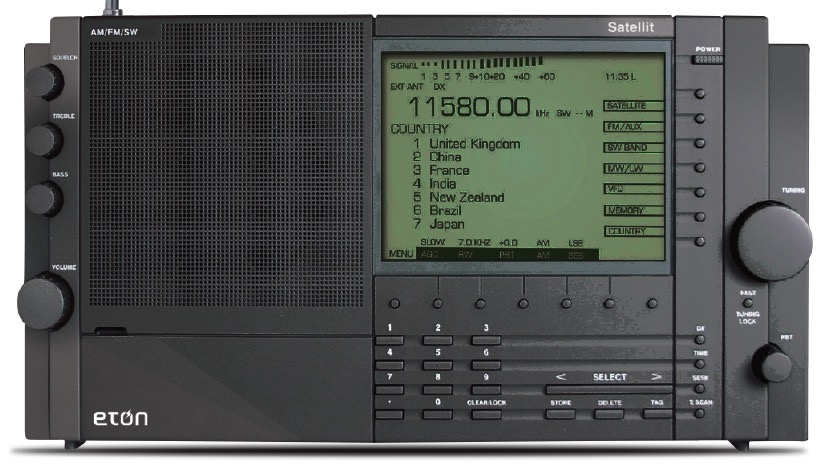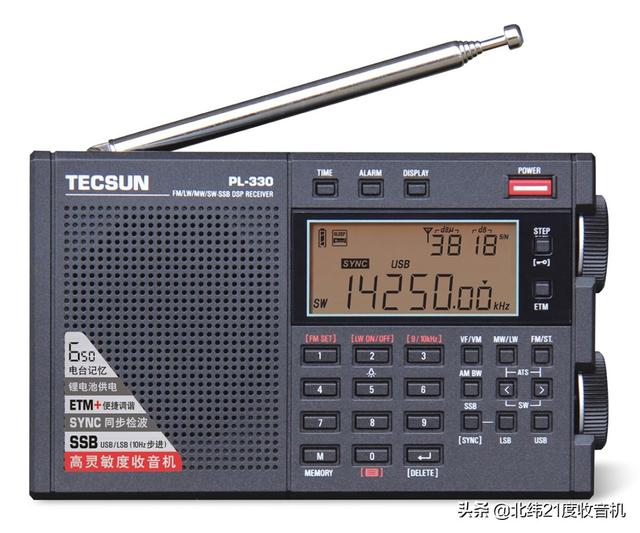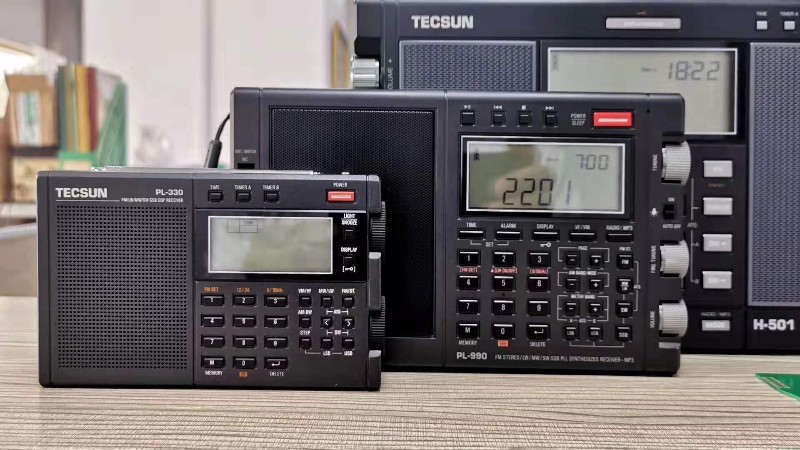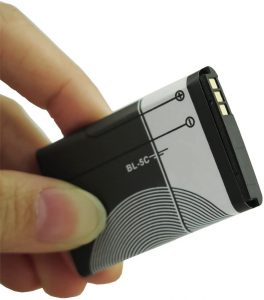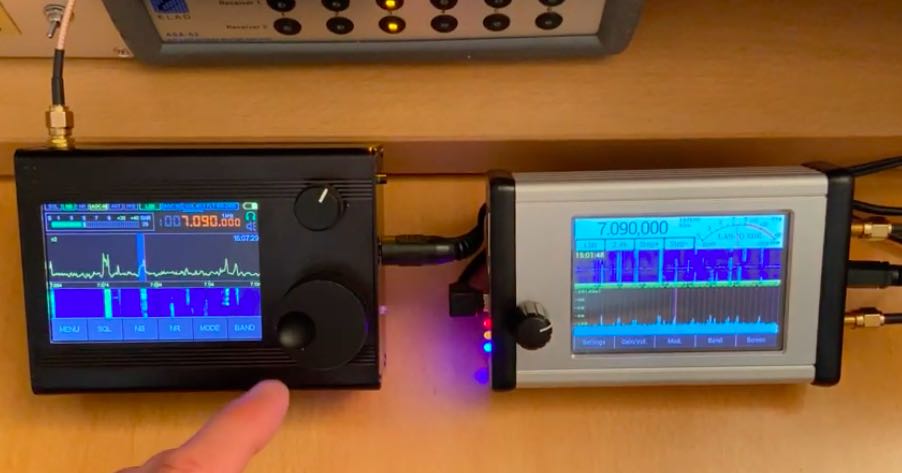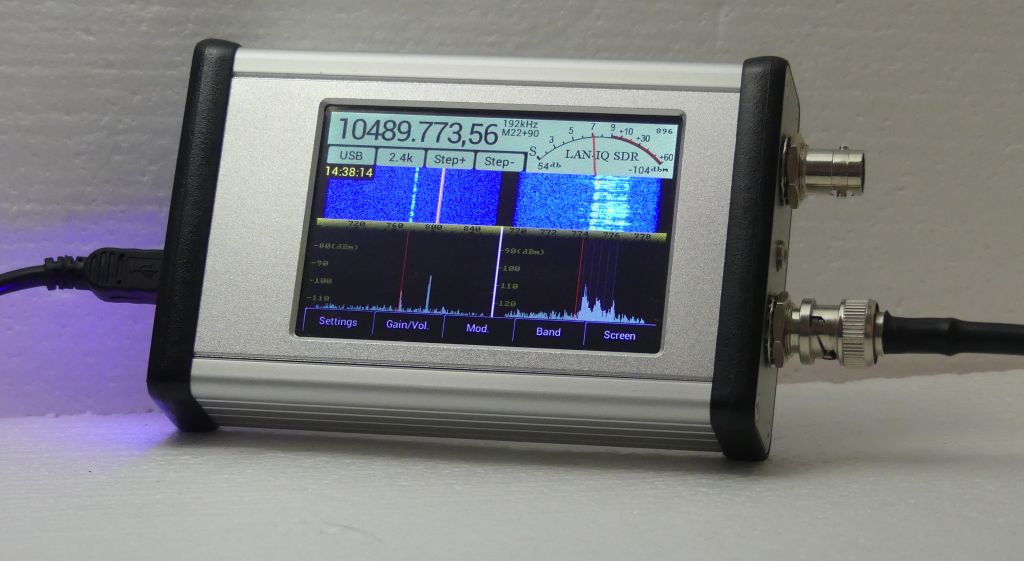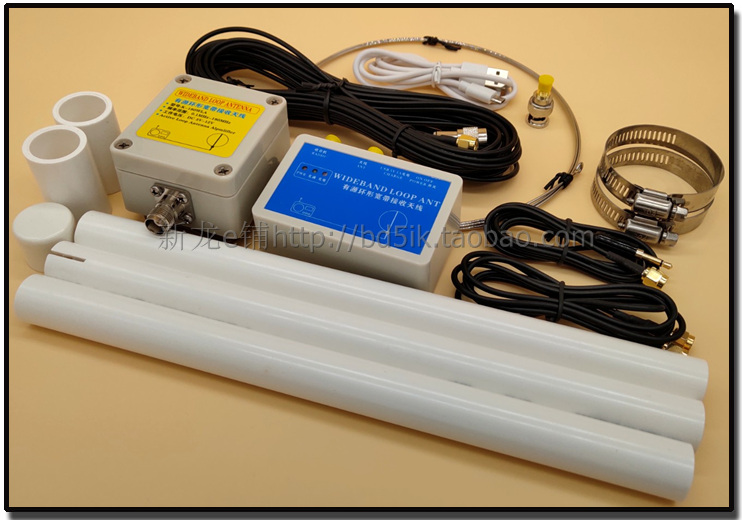Icom Inc. will begin to ship the IC-705, a new all mode portable transceiver covering HF, VHF and UHF, for the Japan domestic market from the middle of June 2020.
Shipments of the IC-705 for international markets will follow the release of the Japan domestic model.
Timing of availability depends on the schedule of type approvals in each region.
For the latest information about the availability in your country, please contact to your authorized dealer in your country.
Icom Inc. is continuing to effect delivery of the IC-705 in the soonest time possible under the current circumstances caused by COVID-19.
We thank you for your patience.
Category Archives: New Products
Eton Elite Satellit delayed until 2021
Many thanks to a number of SWLing Post readers who have pointed out the recent update from Universal Radio regarding the availability of the Eton Elite Satellit.
Per Universal Radio:
05/11/20
Eton expects this new model to be available in 2021. Beacause of the date uncertainty we are not accepting web pre-orders at this time. Please check back in 2021.
i can’t say I’m very surprised by this since we really haven’t had an update on this model in such a long time. That and, of course, the Covid-19 pandemic has really botched up design, production, and the supply chain for so many products.
I’ll admit it: I’m a bit bummed. I was really looking forward to comparing the new Elite Satellite with my recently acquired E1 XM.
The Tecsun PL-330: Some details about this compact shortwave portable in development
Many thanks to a number of SWLing Post readers who shared a link to this website (in Chinese) with photos and details of the new Tecsun PL-330. Note: The server hosting the PL-330 page has been unreliable the past few days.
Some of you might recall the PL-330 in photos of the new Tecsun product line we posted last year. Recently, a handful of preliminary working prototypes have been produced, so I reached out to my trusted Tecsun contact for more information. Here’s what I’ve learned:
Position in Tecsun product line
In terms of the Tecsun product line, the PL-330 appears to be the successor to the venerable Tecsun PL-310ET and/or PL-380.
The PL-330 will have features these legacy Tecsun models do not have, namely:
- synchronous detection,
- single-sideband reception,
- and an upgraded ETM (auto tune and store) feature.
It also appears the SSB tuning steps could be as fine as 10 Hz. Most impressive, if true.
Size
I refer to radios in this size class as “ultra-compact.”
The PL-330 measures 139 × 85 × 26 millimeters (5.5 x 3.3 x 1 inches). Its form factor is very similar to the PL-310ET, but much thinner in profile. The total depth of the radio is only 26 mm.
I love the idea of an even thinner profile, although this certainly limits the type of internal battery that can be used.
Battery
The PL-330 is powered by a single BL-5C lithium battery.
In my world, this is a bit of a negative, but I’m sure the BL-5C was one of the only viable battery options for a radio that’s only 26mm thick.
On the plus side, the BL-5C is widely available, affordable, and can be charged internally.
On the negative side?
Well, I find that the overall capacity doesn’t match that of, say, three AA batteries. Also, I find that the battery’s longevity (meaning, how many charge cycles it can handle) is not that impressive–arguably worse than any other rechargeable battery system I’ve used.
Another reason I prefer AA batteries in compact portables is I know no matter where I travel, I can easily purchase them at almost any retailer, airport, or even hotel, in a pinch. In the past, when I’ve traveled with radios that use the BL-5C, I simply carried a fully-charged spare in a poly zip-lock bag (to protect the battery contacts from inadvertently shorting.
In addition, when I fly, I like to carry as few Lithium batteries as possible.
Perhaps, however, I can find a very high quality BL-5C to use in the PL-330? I would appreciate any leads from readers.
Performance
Since the preliminary prototypes were more or less mechanical prototypes and lacked most of the features planned for this model, there are no performance reports as of yet. In fact, I would be skeptical of any reports you might read in advance of the final production model.
Availability
Like the PL-990 and H-501, there are no reliable estimates for availability or shipping yet. The Covid-19 pandemic has slowed down this process. Most likely, the PL-330 will be released after the PL-990 and H-501, but that isn’t even certain.
Stay tuned!
The PL-330 will have a number of other features and specs, but these are early days and I prefer sticking with what we do know now. As soon as I learn more, I’ll post updates–bookmark the tag PL-330.
Note this reddit thread with an English translation of the Chinese page I mentioned at the beginning of this article (thanks, Tom Daly). It mentions more details, but again, it’s such early days I prefer to stick with what has been confirmed. As with any product in development, a number of changes could occur before the first production run.
Of course, I will review and evaluate the export version of the PL-330 when as soon as it’s available. Stay tuned!
Do you enjoy the SWLing Post?
Please consider supporting us via Patreon or our Coffee Fund!
Your support makes articles like this one possible. Thank you!
Fenu posts a Malahit-DSP & Afedri LAN-IQ “Head to Head” comparison
Many thanks to SWLing Post contributor, Dan Robinson, who shares the following video from Fernando Duarte, comparing the Malahit-DSP and the new Afedri LAN-IQ:
Check out the Afedri LAN-IQ SDR: a new stand-alone touch screen SDR
Many thanks to SWLing Post contributor, Dan Robinson, who shares the following video from Fernando Duarte highlighting the new Alfredi LAN-IQ SDR:
I can’t wait to check out Fenu’s full review of the LAN-IQ when it is posted on his excellent website. The screen seems to be very responsive and layout well thought through.
The Afedri website notes the following features and specifications:
- 30 kHz to 1700.00MHz continuous frequency range
- Direct sampling
- DDC – Digital Down-Conversion
- 12- bit 76.8 MSPS A/D conversion
- Stand Alone mode (AM, CW, SSB, NFM, WFM stereo, BPSK, QPSK demodulators)
- Up to 2.2MHz recording and processing bandwidth
- Waterfall display functions, when used with appropriate software
- Recording and playback, when used with appropriate software
- Sensitivity – MDS -136 dBm at 500Hz bandwidth (0.03MHz-35MHz)
- Sensitivity – MDS -143.5 dBm at 500Hz bandwidth (50MHz-435Mhz)
- USB 2.0 (Full Speed) interface
- LAN interface for remote access
- Compatible with: Linrad, Winrad, HDSDR, Studio1, SDR Console (SDR-radio), CuteSDR, SdrDX, Quisk, PowerSDR_mrx
- Powered from USB or external power supply 7-10VDC
- Dimensions 120mm deep x 78mm wide x 27mm high
- Unit cost – $339
The LAN-IQ can be connected to a PC via USB or Ethernet (at a 2400 kHz sample rate).
The Afedri website also has a few videos of the LAN-IQ in operation:
As you might have noted, the encoder knob seen in Fenu’s video is not standard but can be added at an additional cost and extended lead time. If I were to order the LAN-IQ, I would want the encoder knob as well.
Also, note that due to Covid-19 affecting the supply chain, Afedri SDR informs me that LAN-IQ availability will be adversely affected. If you would like to order a LAN-IQ, contact Afedri SDR via their website.
Click here to check out the LAN-IQ and all specs at Afedri SDR-Net.
New Product: K-180WLA Active Loop Antenna with rechargeable battery
Many thanks to SWLing Post contributor, crvee8, who shares a link to the K-180WLA, a new active mag loop antenna.
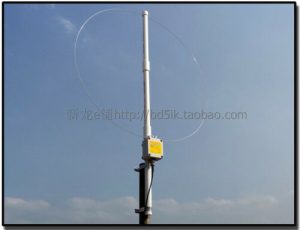 Based on the product description, the K-180WLA sounds a lot like a typical magnetic loop antenna (and resembles the popular MLA-30), but what makes it unique is the fact that it can be recharged via a Micro USB port.
Based on the product description, the K-180WLA sounds a lot like a typical magnetic loop antenna (and resembles the popular MLA-30), but what makes it unique is the fact that it can be recharged via a Micro USB port.
This means, there’s no need for a separate power supply.
There’s no mention of how long a charged battery would power the amplifier, but I imagine it would be respectable given it employs the 3.7V 18650 lithium cell.
The frequency range is 0.1-180 MHz and the manufacturer claims it, “provides a gain of about 20 dB, even when working to 450MHz gain, there is still about 8.9 dB.”
Battery power would certainly make this a very portable active antenna loop option. The price is right, too, at $55.88 USD which includes shipping from China. The listing claims only 5 units are available at time of posting.
Click here to view on eBay (partner link).
Post readers: Please comment if you’ve purchased this antenna. We’d love to hear your thoughts/review.
Icom IC-705 delivery has been delayed
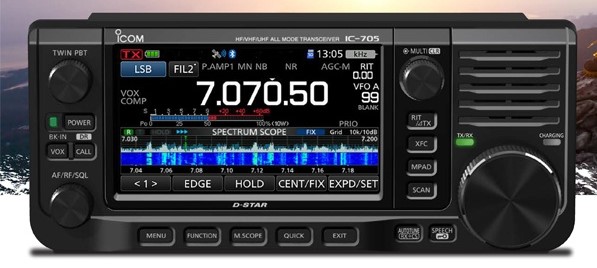 Many thanks to SWLing Post contributor, Paul Evans, who writes:
Many thanks to SWLing Post contributor, Paul Evans, who writes:
As you’d expect, Icom has formally delayed the delivery schedule of the IC-705.
Here’s the announcement from Icom Japan: https://www.icom.co.jp/news/4720/
The following is a machine translation of the announcement:
“Thank you very much for your patronage of ICOM products.
We have received reservations from a large number of customers about the IC-705, a 10W walkie-talkie with HF~430MHz all-mode, which was scheduled to be released in late March 2020. Some of the parts involved in the production of the product are delayed due to the new coronavirus issue, and production has been delayed due to this.
We apologize for any inconvenience caused to all of you who are looking forward to our products.
As for the delivery of the product, because it is a situation in which the arrival schedule of the part does not stand now, I will guide it separately as soon as it turns out.
We will take a while to deliver it, but we will do our best to deliver it as soon as possible, so please understand us.”
Thanks for sharing this, Paul. No doubt, delays are due to the affects of Covid-19 on both manufacturing in Japan and throughout the IC-705 supply chain.
For updates, bookmark the tag IC-705.

